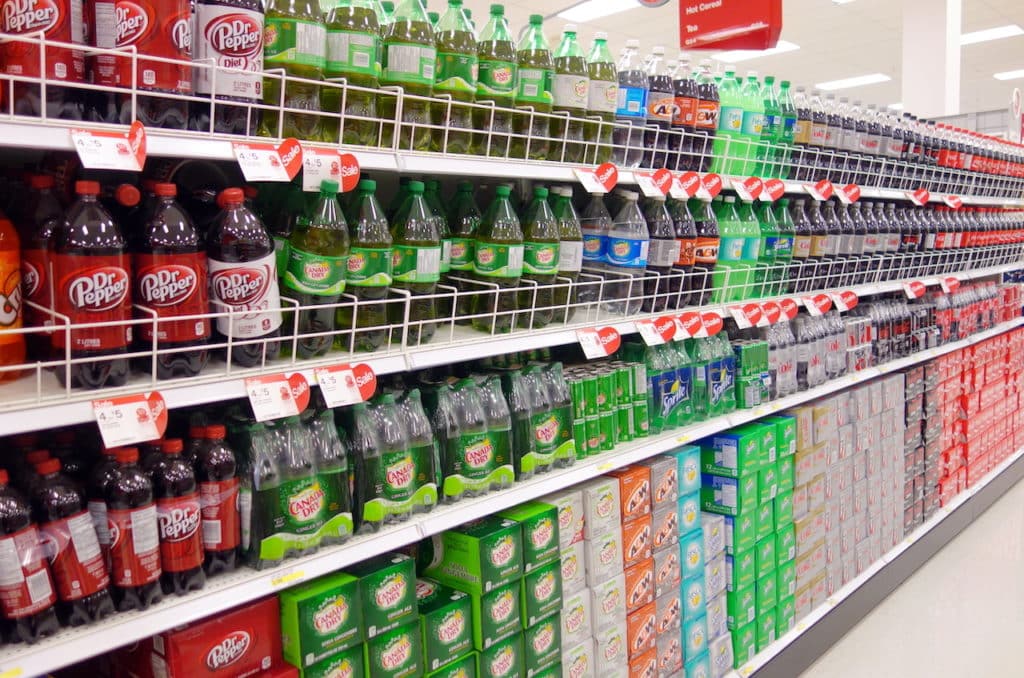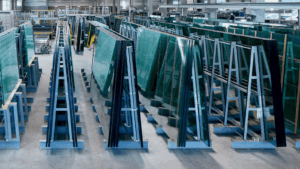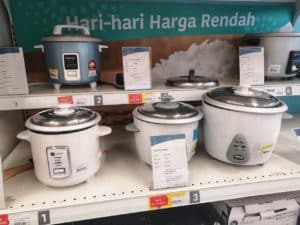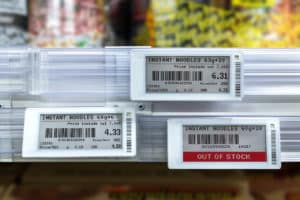Shelving is one of the most redundant tasks for retail companies. Yet it's often of prime importance in attracting consumers' attention, so getting it right is a challenge. In this article, we present you with the best practices for successful shelving and the best results, with a single goal in mind: to improve your presentation and enable you to make the most of your sales space.
Shelving: definition and objectives
Shelving is an integral part of any company's commercial activity. It is the process of arranging products on the shelves of a point of sale, as well as their visual presentation. The main aim is to provide customers with a positive shopping experience and to promote the brand and its products.
In fact, shelving can lead to an increase in the number of visitors, as well as higher sales and profits for the company. Good shelving is therefore a key factor in a company's success. There are a number of techniques and best practices to consider in order to achieve effective shelving. Here are three tips to keep in mind at all times.
Have a plan
Next, it's crucial to plan and organize your sales space around the different products on offer, so that they are easily accessible to customers and capture their attention. You need to ensure that your store is always clean and tidy, as a comfortable environment will encourage customers to spend more time in your store and encourage impulse buying. When you feel good in a place, you're more likely to stay.
Do you have "star" items? By placing them in strategic locations such as the counter or checkout, they'll be more visible to consumers.
Play on prices
You should create attractive promotional offers to entice customers to buy your products. Prices play an interesting role in that they can be a determining factor when a customer makes a purchasing decision. The choice of promotional space, colors and labels needs to be thought through in relation to the product and the type of promotion, in order to appear as attractive as possible to the customer.
Managing inventory
Of course, you'll need to keep a regular check on your stock levels, so that you can quickly put any missing or sold-out products back on the shelves. One way to increase the efficiency of your business operations and avoid running out of merchandise is to use IT tools such as inventory management systems and specialized programs designed to manage shelving. These tools can not only optimize your shelving process, but also improve your overall efficiency and productivity.
Shelving is a complex process that can have a significant impact on the success or failure of a company's commercial operations. To succeed in this important task, never forget to meticulously plan the space and promotional offers proposed to customers, as well as stock management and the appropriate use of IT tools available on the market.
Shelving: the different methods
Beyond these examples, there are many different ways to optimize sales. To achieve a satisfactory result, you need to know the specifics and best practices that contribute to successful shelving. The following elements will help you ask yourself the right questions, and enable you to draw up your own action plan.
Shelf setting adapted to product type
To begin with, the first step to successful shelving is to know both the target and the type of products to be displayed. This will help define the layout and type of displays required. Some products need to be positioned at a certain height or in a certain area to attract customers' attention.
It's essential to know your target audience so that you can adapt your products and their presentation to their needs and expectations. You won't do the same thing if you're selling watches or household products, that's obvious. What do you want to show? Rarity, exceptionality, abundance? Think about your objective and act accordingly.
In all cases, the choice of the right display unit should not be overlooked to provide an optimal customer experience. To make it easier for customers to navigate the sales area, products need to be clearly identified and categorized, so that they can quickly find what they're looking for.
Geographic shelving strategy
Showing a store map is a way of speaking clearly to the customer, indicating specific shopping areas and clearly visible locations. This makes it easier for customers to find their way around the sales area and access the various departments. Once these steps have been completed, the crucial moment comes: the organization of products on displays.
Product placement
You need to place products in distinct categories and create space between each group so that each can be clearly identified. But first and foremost, you need to ensure that all products are neat and tidy to maintain an attractive store appearance and give customers a positive image of the business.
Finally, grouping promotional items together in a visible place influences consumers, as it gives them access to current offers or new items proposed by the store. It's up to you to make a coherent selection according to your objectives. Don't forget that your customers will look at your store positively or negatively according to this directly perceptible visual criterion.

Other shelving practices
Poor shelving can lead to significant losses, while successful shelving can help increase sales and brand awareness. Shelving is all about efficiently organizing products on the shelves. It's not about putting as much as possible on the shelf, but about selling as much as possible. There's a big difference between the two, and you shouldn't confuse the two.
Product shelving follows a well thought-out plan: for example, the most popular or best-selling product should be placed at eye level to attract customers' attention. Products are arranged according to their categories or families, so that customers can easily find what they need. But that's not all: product size must be taken into account when shelving, as it can influence the buying reflex, just as colors can be a factor of harmony or rejection.
A good shelving system allows products to stand out while providing easy access for customers. This can be achieved through the use of accessories such as racks, displays, shelves and drawers. Labels or stickers need to be clearly legible and well placed, so that customers can find what they're looking for quickly and without confusion. Prices should also be updated regularly to reflect changes in the market or any special promotions.
Good organization and clear signage are essential, but the product must also be available in quantity. Stock rotation is particularly problematic, especially in the case of success! The sales target also ensures that products are not too old to be sold: there's nothing worse than having to throw out products that are out-of-date or too dated.
Proper supervision of shelving operations and thorough analysis after each operation to identify any potential problems will save you money. Poor shelving can quickly turn into a costly mistake. Taking stock after each period is the key to continued progress in the science of shelving. Following these practices can greatly improve your chances of retail success!
FAQ
Q1: What's the first step to successful shelving?
The first step to successful shelving is to know the products to be displayed. Familiarizing yourself with their sizes, weights, colors and varieties is an essential prerequisite for organizing them correctly.
Q2: What are the rules to be observed when stocking shelves?
When stocking shelves, there are a number of rules to be observed. You need to organize products by category, always keep products in their intended place and make sure they are easily accessible to customers. Make sure that each product is well labeled and that product information is clear and visible.
Q3: How can we maintain a good level of product supply?
To maintain a good level of product supply, constantly monitor stock levels and allow sufficient time for replenishment if necessary. The key word: keep abreast of market trends to anticipate customer needs.
Q4: How important is product presentation?
Product presentation is extremely important for successful shelving. Customers need to be attracted by the appearance of products, and be able to find what they're looking for quickly and easily. So make sure all your products are well organized and stylishly arranged.









